| de Vos van Steenwijk | |
|---|---|
| noble family | |
 Coat of Arms | |
| Country | |
| Founded | 14th century |
| Founder | Coenraad van den Goere |
| Titles | baron |
De Vos van Steenwijk is an old Dutch noble family from the Dutch province of Overijssel.
| de Vos van Steenwijk | |
|---|---|
| noble family | |
 Coat of Arms | |
| Country | |
| Founded | 14th century |
| Founder | Coenraad van den Goere |
| Titles | baron |
De Vos van Steenwijk is an old Dutch noble family from the Dutch province of Overijssel.
The family was already noble from earliest times ("Uradel"). The first documented ancestor is Coenraad van den Goere who is mentioned in 1318. His son Johan is the first member to carry the De Vos van Steenwijk surname. According to family tradition he was give the name De Vos (the Fox) because of his red hair.

De Wolden is a municipality in the northeastern Netherlands in the province of Drenthe.

Dalfsen is a municipality and a town in the Salland region of the Dutch province of Overijssel. The municipality of Dalfsen was increased to its current size on 1 January 2001 through the amalgamation of the municipalities of Nieuwleusen and Dalfsen. A variety of Sallands is spoken here by segment of the population.
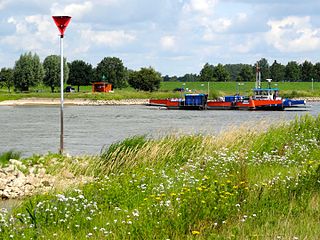
Wijhe is a village in the Dutch province of Overijssel. It is located in the municipality of Olst-Wijhe and is situated about 12 km south of Zwolle on the banks of the river IJssel.
De Vos is a Dutch-language surname meaning "the fox". In 2007 in the Netherlands, nearly all ≈11,000 people with the name spelled it de Vos, while in 2008 in Belgium, primarily in East Flanders, nearly all ≈11,000 people with the name capitalized it De Vos. Another 9220 people in Belgium, mostly in West Flanders have the concatenated form Devos, while in the United States the form DeVos can be found.

De Wijk is a village in the Netherlands province of Drenthe. It is located in the municipality of De Wolden, and is about 7 km southeast of Meppel. It is home to Rijksmonument 39657, De Wieker Meule.

Steenwijksmoer is a village in the Netherlands and it is part of the Coevorden municipality in Drenthe.

Lucia Wijbrants or Wybrants was the daughter of Johannes Wijbrants, a silk merchant, whose ancestors had moved from Stavoren to Antwerp. After 1585 when Antwerp was occupied by the Spanish army, the family moved to Amsterdam and lived in a house in the Warmoesstraat, then a fashionable shopping street. They had eight more children: only Hendrick (1623–1669), Helena (1628–1721), and Johannes survived.
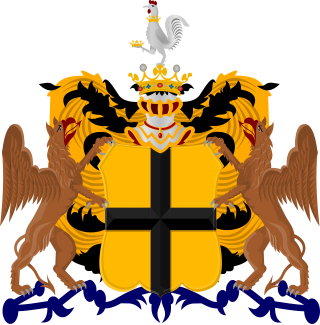
the House of Bylandt is the name of an ancient house of nobility originating in the Lower Rhine region. It later split into the cadet branches of Bylandt-Well, Bylandt-Rheydt and Bylandt-Halt-Spaldorf.
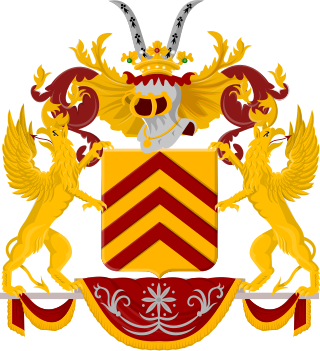
The van Voorst tot Voorst family is an old Dutch noble family from the province of Overijssel.
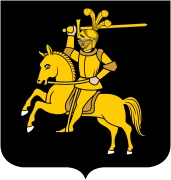
The Ripperda family is an old and prominent family that belonged to the German, Austrian, Spanish and Dutch nobility. Members of this family have played a major role in European history as soldiers, politicians and diplomats.

Willem Lodewijk, Baron de Vos van Steenwijk was a conservative Dutch politician.

De Graeff is an old Dutch patrician and noble family,
Johan Engelbert Elias was a Dutch historian known mostly for his important work on the history of Amsterdam's regency. He is considered the father of genealogical research in the Netherlands.
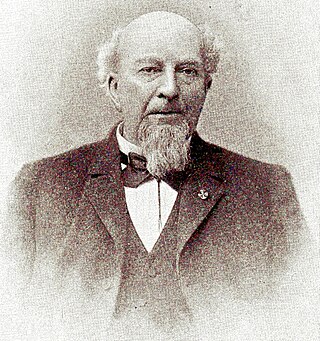
Frans Julius Johan van Eysinga was a Dutch politician. He was president of the senate of the Netherlands from 1880 till 1888.

Jan Arend Godert, Baron de Vos van Steenwijk was a Dutch politician. He was president of the senate of the Netherlands from 1874 until 1880.
The County of Diepholz, that was first known as the Lordship of Diepholz, was a territory in the Holy Roman Empire in the Lower-Rhenish-Westphalian Circle. It was ruled by the Noble Lords, later Counts, of Diepholz from the late tenth century until 1585, when it was mostly incorporated into the Duchy of Brunswick-Lüneburg.

Carel de Vos van Steenwijk was a Dutch politician and diplomat.

Pieter Johan van Berckel was a Dutch politician, who served as mayor of Rotterdam and the first ambassador from the Dutch Republic to the United States of America. He also remained part of the government of Rotterdam until 30 January 1788, when he was dismissed by William V, Prince of Orange and the Estates General of the Dutch Republic - he never returned to Rotterdam and remained a refugee, dying in Newark.

The Boelens and Boelens Loen were a Dutch patrician family of Amsterdam. The family figured in the city's government lists between the years 1360 and 1680. They were considered to be quite an influential Amsterdam family in their time and were intensely involved in the history of their hometown. Between 1495 and 1538 the oligarchy of the so-called Boelen-Heijnen clan was at the forefront of the Amsterdam city government.

The House of Aspremont-Lynden is the name of an important Belgian noble family, which might have originated from the House of Lynden, part of the Dutch nobility. Due to their properties and intermarriages, the family also became part of the German nobility.